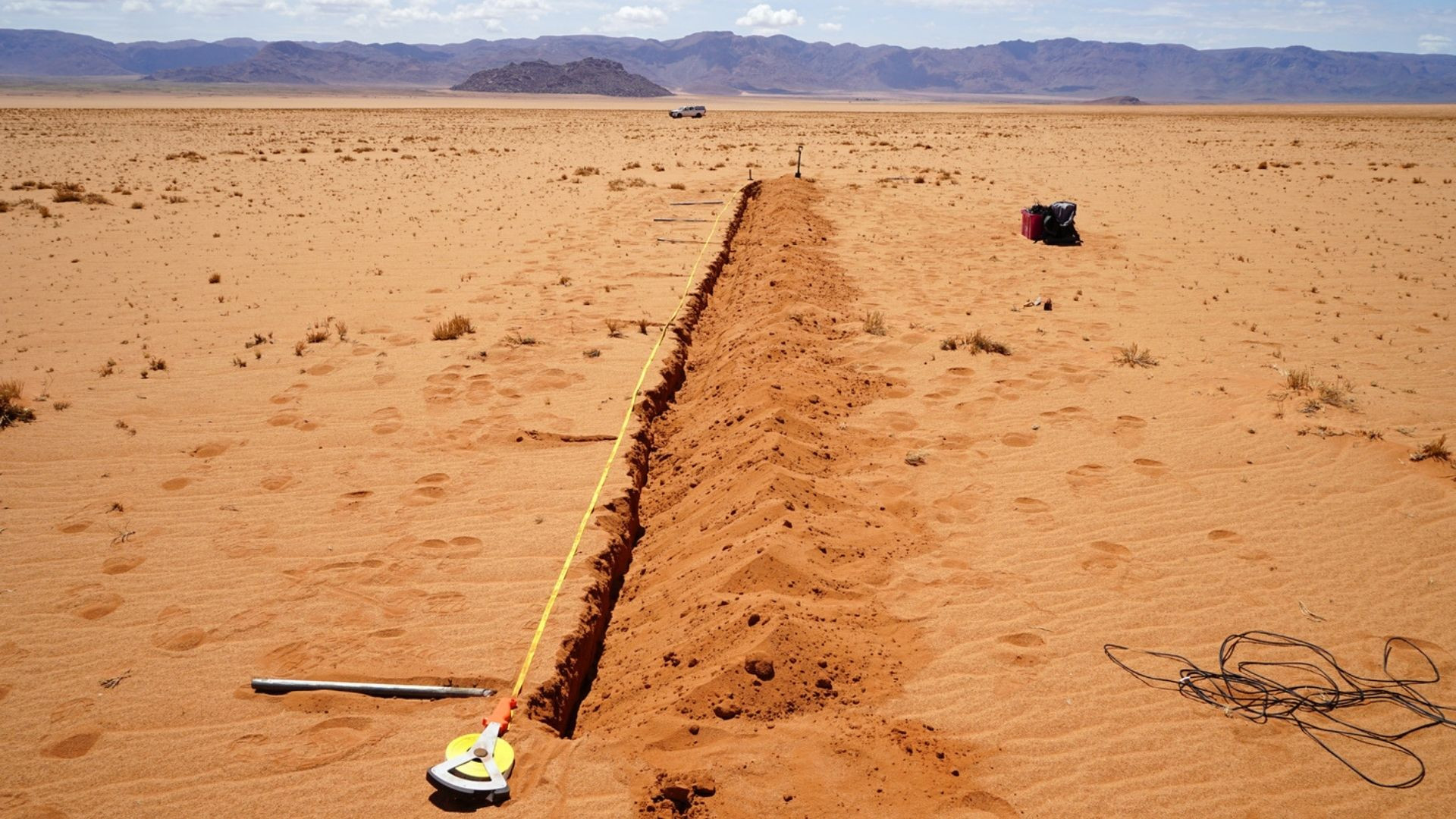Researchers have solved the mystery of Namibia’s fairy circles
Their existence will no longer mystify us.

Identified in Namibia, fairy circles are circular regions of land devoid of vegetation that range in diameter from 7 to 49 feet (2 to 15 meters) and are frequently surrounded by a ring of promoted grass growth.
Until recently, these fairy circles were seen as a mystery. In 2020, in the Department of Ecosystem Modeling at the University of Göttingen in Germany, researchers tried to solve the mystery by using the Turing method — which explains how natural patterns like stripes and dots can emerge organically and independently from a homogeneous, uniform state.
Now, the team has officially sold the mystery, as reported in the release. The results of the research were published in Perspectives in Plant Ecology, Evolution, and Systematics on October 20.

What path was followed?
Millions of fairy circles — circular holes in the grassland, each a few meters wide, forming a characteristic pattern across the entire landscape and visible for miles around — can be found in Namib, about 80-140 kilometers from the coast. The researchers observed intermittent rain in numerous desert locales and analyzed grasses, their roots and shoots, and probable termite root damage.
After the rainfall, which led to the grasses’ new growth, the researchers took great care to look into the circumstances of dying grasses within fairy circles.
In addition, they set up soil-moisture sensors near the fairy rings to measure the amount of water in the soil at intervals of 30 minutes, beginning in the dry season of 2020 and ending in the wet season of 2022.
This allowed the researchers to carefully document how the soil water within and around the circles was impacted by the growth of the newly sprouting grasses. At ten locations across Namib, they looked into the variations in water infiltration between the inside and outside of circles.
Mystery solved
The findings demonstrate that the grasses within the circles began to die about 10 days after rainfall, while the majority of the interior area of the circles had no grass germination at all. The struggling grasses inside the circles were completely dead and had turned yellowish in color twenty days after the last rain, whereas the grasses outside the circles were green and healthy.
“The sudden absence of grass for most areas within the circles cannot be explained by the activity of termites because there was no biomass for these insects to feed on. But more importantly, we can show that the termites are not responsible because the grasses die immediately after rainfall without any sign of creatures feeding on the root,” explained Dr. Stephan Getzin, Department of Ecosystem Modelling at the University of Göttingen.
“The sudden absence of grass for most areas within the circles cannot be explained by the activity of termites because there was no biomass for these insects to feed on,” said Getzin.
“But more importantly, we can show that the termites are not responsible because the grasses die immediately after rainfall without any sign of creatures feeding on the root.”
Abstract:
The fairy circles of Namibia form a remarkable gap pattern in arid grassland along the Namib Desert. The origin of the fairy circles is subject to an ongoing debate. Solving the mystery of the fairy circles (FCs) requires the right timing in fieldwork after rainfall, as the newly appearing grasses complete their life cycle within only a few weeks. Here we followed the rains along the Namib between 2020 and 2022 and assessed the cause of the grass death within FCs at different time intervals after grass-triggering rainfall. To assess whether termite herbivory was the cause, we used grass excavations and observations on the roots and shoots. To test if edaphic differences may explain the grass death in FCs, we undertook infiltration measurements in 10 FC-hotspot regions. Finally, we used continuous soil-moisture measurements from the dry into the rainy seasons to examine how the newly emerging grasses affect the soil-water content in space and time. Generally, in study plots that received grass-triggering rainfall most recently, the roots of the dead grasses in FCs were in 100 % of the cases undamaged, root-shoot ratios were significantly greater, and the roots were as long or even longer as those of the surrounding matrix grasses outside of the FCs. This indicates that drought stress caused grasses in the FCs to invest resources into roots to reach the percolating water. The results also show that the cause of the grass death in fairy circles was not induced by termite herbivory. Also, we found no systematic differences in the rate of water infiltration between FCs and the matrix; hence the plant wilting cannot result from quicker percolation within FCs. However, the soil-moisture measurements indicate that the matrix grasses strongly depleted the upper soil water of the FCs after rainfall, which explains why most grasses cannot establish and quickly die in the FCs. The research shows that grass death in fairy circles occurs immediately after rainfall due to plant water stress but not due to termite activity. Our results conform with previous fieldwork, pattern analysis and theoretical modeling, suggesting that Namibia’s fairy circles are a self-organized vegetation phenomenon induced by ecohydrological feedbacks.
 SHOW COMMENT ()
SHOW COMMENT ()










